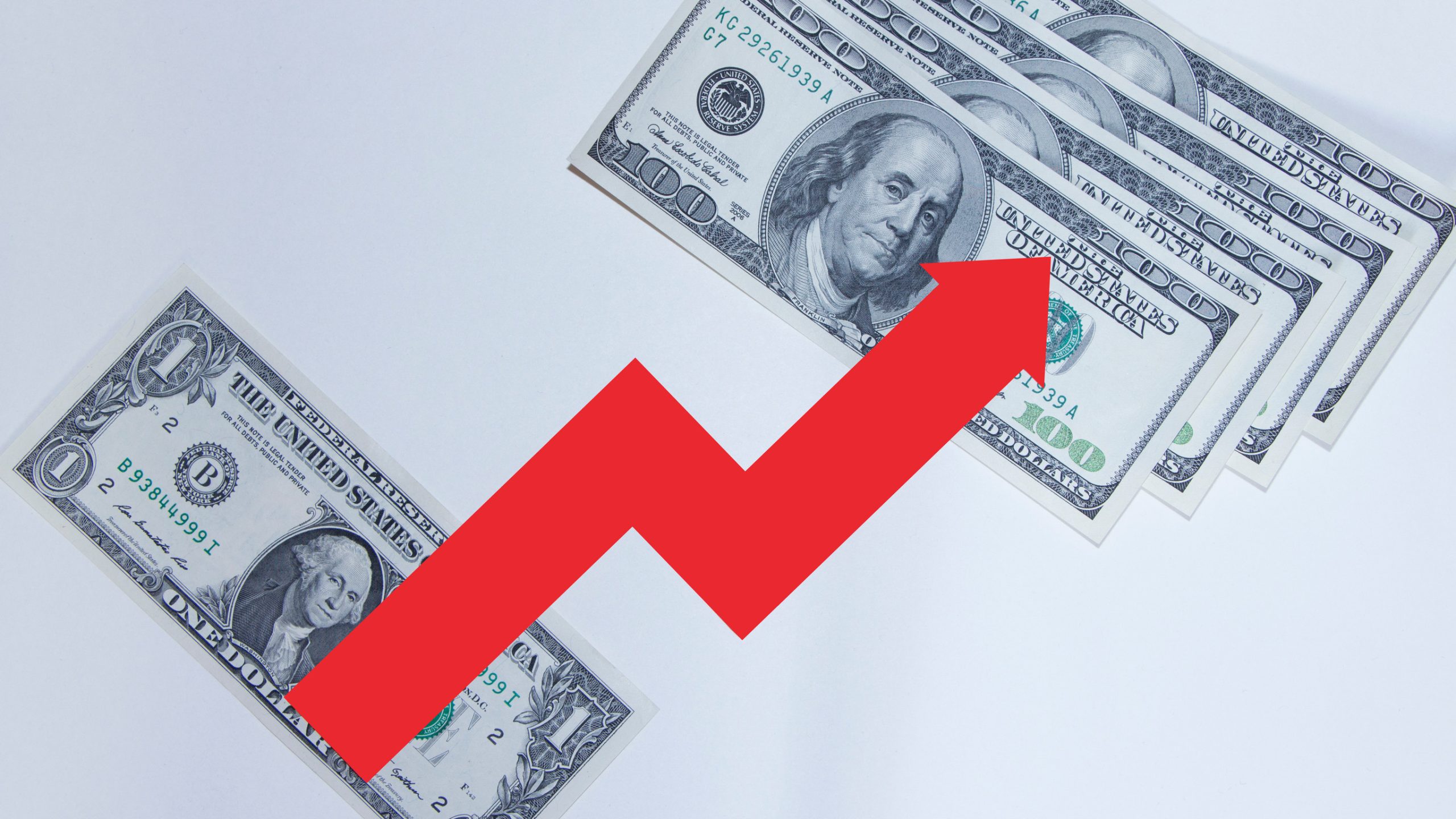
Image Source: 123rf.com
It’s no secret that prices for goods and services are constantly increasing, but what’s more alarming is how companies are quietly raising prices without us even realizing it. Often, they use sneaky tactics to inflate prices slowly over time, making it harder for consumers to notice the rising costs until it’s too late. From shrinking product sizes to hiding fees, these methods can leave you paying more for less without a clear explanation. Here are 10 ways companies are quietly raising their prices—and what you can do to avoid getting caught in the price hike trap.
1. Shrinkflation: Smaller Portions, Same Price
One of the most common tactics companies use is shrinkflation, which occurs when they reduce the size of a product while keeping the price the same. This can happen with everything from snacks to household items. While you’re paying the same price, you’re getting less for your money, making it feel like a slow, invisible price increase.
Companies love this strategy because it’s not as obvious to consumers. You might not immediately notice that a bag of chips has shrunk by a few ounces, but over time, it adds up to a significant price increase without you realizing it.
2. Hidden Fees and Charges
Have you noticed more fees popping up when you buy concert tickets, book travel, or even shop online? Companies are increasingly adding “service” fees, processing charges, and delivery fees on top of the original price. While these fees might seem small individually, they can significantly raise the total cost of a product or service.
Often, these fees are buried deep in the checkout process, making it easy to overlook until the final bill. They can even be presented in such a way that consumers don’t question the added costs.
3. Subscription Models Instead of One-Time Payments
Many companies have shifted to subscription models, even for products and services that traditionally had one-time fees. Think of things like streaming services, software, or even razors and groceries. While subscriptions seem more affordable at first, they often accumulate into a much higher total over time.
These subscription models also make it easier for companies to increase prices without a major outcry. A slight increase in a subscription fee is less noticeable on a recurring monthly basis than it would be as a lump-sum price hike.
4. Dynamic Pricing Based on Demand
Dynamic pricing, or surge pricing, is commonly used in industries like transportation and travel. Companies like Uber, Lyft, and airlines adjust their prices based on demand, meaning that during peak times (such as holidays or rush hours), prices skyrocket. While dynamic pricing isn’t inherently bad, it can catch consumers off guard when they’re forced to pay significantly more than expected.
This pricing model is often unpredictable and can make it feel like prices are steadily rising, even if companies don’t openly admit to increasing rates. Consumers may feel like they have no choice but to pay for services during peak demand, leading to a hidden price hike.
5. Price Increases After “Free Trial” Periods

Image Source: 123rf.com
Subscription services like streaming platforms, apps, and online tools often entice you with a “free trial” period. Once the trial is over, the price jumps to a full rate, sometimes with a significant increase. What makes it worse is that many people forget to cancel the trial, unknowingly allowing the price increase to kick in.
The key to this price-hike tactic is that the company doesn’t always make it clear that you’ll be charged more after the trial ends. Consumers can end up paying a higher rate without any prior warning.
6. Branding Changes with Price Hikes
A subtle method used by companies is changing the branding of a product or service and quietly raising the price at the same time. When a company introduces a “new and improved” version of an item, it may justify the higher price by emphasizing the changes, even if the product itself hasn’t substantially changed in value.
This makes it harder for consumers to notice the price hike, as they associate the price increase with the so-called “improvement.” It’s a clever strategy that helps companies reframe the price raise as part of an upgrade rather than a simple price increase.
7. Loyalty Programs That Encourage Spending More
While loyalty programs are designed to reward frequent customers, they often encourage you to spend more money than you intended to in order to receive rewards. Companies will often offer points or discounts that can only be used when you make additional purchases, pushing you to spend more in the long run.
Rather than providing genuine savings, these programs can lead you to pay more for items you don’t necessarily need just to earn a reward. In many cases, the rewards are so small that they don’t make a real difference to your overall spending.
8. Charm Pricing: The Subtle Trick to Make Prices Appear Cheaper
Charm pricing is a psychological pricing tactic where companies set prices just below a round number—think $9.99 instead of $10. The idea is that consumers perceive $9.99 as significantly cheaper than $10, even though the difference is only a penny. This subtle trick influences how we view prices, making us more likely to make a purchase based on the perception of a bargain.
Over time, these small adjustments across many products can add up, leading to a notable increase in the total cost of your shopping. By setting prices just below the next whole number, companies continue to exploit this pricing strategy without consumers realizing how it impacts their spending.
9. Inflating ‘Sale’ Prices
Have you ever noticed that an item is “on sale” for a price that seems too good to be true, only to find out that the sale price is actually the same as the regular price in other stores? Companies often inflate the original price on an item just so they can offer it at a “discounted” price. This creates the illusion of savings, while, in reality, you’re paying the same price as before.
These inflated sale prices can trick consumers into thinking they’re getting a deal, but in fact, they’re just paying the regular price for an item that’s been marked up to make the discount look significant.
10. Increasing Prices Slowly Over Time
One of the sneakiest tactics companies use is raising prices in small increments over time. You might not notice a $0.25 increase on a cup of coffee or a $1 increase on your favorite snack, but when it happens repeatedly over several months or years, it can lead to a significant price hike. By gradually increasing prices, companies avoid a major backlash and keep consumers complacent with the small changes.
It’s important to pay attention to small price increases, as they can have a larger financial impact than expected when combined over time. Staying aware of these increases can help you make smarter purchasing decisions and avoid feeling blindsided.
Awareness Can Avoid Price Traps
Companies are becoming increasingly creative with how they raise prices, often using tactics that fly under the radar. By staying informed and being aware of the ways in which businesses are manipulating prices, you can avoid getting caught in these hidden traps. Keep an eye on your monthly expenses, question sudden price increases, and be mindful of the little changes companies make over time. By doing so, you can save money and make smarter financial choices, even in an environment where prices are steadily rising.
What are some of the price traps you’ve found when shopping in some of your favorite stores? Have you fallen for some of them? Let’s discuss them in the comments below.
Read More:
Several Ways to Get Cash Back-Try One Of These 3 Sites
14 Things That Are Never a Good Deal at Warehouse Stores

Latrice is a dedicated professional with a rich background in social work, complemented by an Associate Degree in the field. Her journey has been uniquely shaped by the rewarding experience of being a stay-at-home mom to her two children, aged 13 and 5. This role has not only been a testament to her commitment to family but has also provided her with invaluable life lessons and insights.
As a mother, Latrice has embraced the opportunity to educate her children on essential life skills, with a special focus on financial literacy, the nuances of life, and the importance of inner peace.
Leave a Reply